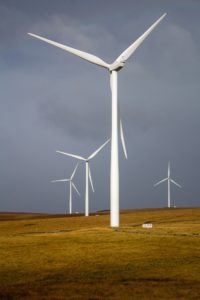With the effects of climate change slowly rearing its ugly head to show just how much of an effect humanity has had on the environment, many people have started taking this issue more seriously, and are trying to convince others to do the same.
Researchers have thus started their research on different energy sources that can potentially be harnessed to reduce the usage of fossil fuels, and thus, emissions, as much as possible. One of which is wind.
Wind is something we are all accustomed to. Step outside. If you feel a cold force blowing in your face, you know that you’re being hit by wind, and now research is being done to turn this wind into usable energy like electricity.
So, then the question is, why? What makes wind energy so special?
It is good for the environment.
As you can probably already tell by its nature, wind is not harmful to the environment in any shape or form, even when generating electricity through wind turbines. This is because wind turbines produce no greenhouse gases while running.
In comparison, power plants use fossil fuels that require being burned, such as coal, which releases carbon dioxide and methane up in the atmosphere. These gases are considered emissions and contribute to pollution and climate change.
This also means that the more wind energy is utilized, the less strain it gives to the usage of fossil fuels, as now the workload of providing electricity is being shared by a cleaner method of obtaining energy. This reduces fossil fuel usage all around.
It is a renewable resource.
Again, we will compare wind energy to fossil fuels. Fossil fuels take millions of years to be produced, so while technically a renewable source, it takes far too long for it to matter so it is considered nonrenewable. It doesn’t help either that when used, they pump out noxious fumes into the air that contribute to global warming.
On the other hand, wind energy is something that will never run out, at least not while the sun shines. But it’s something we won’t need to worry about, as the sun still has billions of years in its lifespan before it expands and consumes the earth. And again, it’s clean!
It is free.
No one owns the wind, and people use it all the time for recreational activities, from paragliding, to sailing, to even flying kites.
This also means that people can use wind as a way to save a lot of money on their electric bill, provided that they are willing to build a personal wind turbine and have the resources to do so.
This means that not only does wind power help the environment, but it also heavily cuts costs for people who utilize it in the long term as well!
They can be used to provide power in more remote places.
One of the problems that villages or towns that live in more isolated places is that all the places that produce electricity are located far, far away from them, as they are needed to produce electricity for the cities and suburban areas nearby instead.
Overhead power lines have been considered but are also thought to be very expensive to be easily approved. Plus, their existence would leave a large imprint on the land, as they would need a lot of wires and structures to travel far. Underground power lines can reduce the land imprint, but with it comes even more expensive costs as well as safety concerns.
Wind turbines would reduce a lot of, if not all of, those problems, as you can simply build a wind farm in these remote locations to provide power to nearby communities, villages, or research facilities.
To make matters better, isolated places are the best locations that a wind turbine can be located at anyways. Wind turbines can get very loud, especially if there are a lot of them. The farther they are from civilization, the better. They also need the wind to blow towards them to move their blades and cause them to actually produce electricity. Buildings from residential areas or nearby cities can block wind due to their heigh, thus reducing the effectiveness of wind turbines.
With wind turbines far away from people and buildings, they are at their best and most efficient.
Wind turbines don’t use a lot of land.
While they are towering and imposing structures where they stand tall and proud with their blades spinning, their land usage is actually relatively small. In isolated places, while they may block the view a little bit, they aren’t as big as many other buildings, and they do not inconvenience those who are nearby, such as farmers who are toiling away at their fields.
Maintenance and running costs of wind turbines are low.
Wind turbine maintenance only needs to be done once every few months, and this is only to check if some wirings may have gone loose or if the environment has worn down any part of the turbine. The blades will eventually need to be replaced as well, but barring something drastic, this will take around 10 years before that would be actually needed, which is a pretty long time.
Wind turbines are expensive upfront, but the cost in running them is very cheap. As mentioned earlier, all they need is wind, and wind is a free resource. Wind turbines simply need to be properly maintained, and they will last for a very long time.
Technology is constantly improving to make them even better than before.
Wind turbines have shouldered a lot of criticism in the past, thanks in no small part to not just being noisy to nearby residents, but also due to other things like killing wildlife such as birds and bats that fly through the blades.
However, research is currently ongoing to reduce the impact that these wind turbines have on the environment. In fact, modern wind turbines have reduced their effects on birds, thanks to technological advancements.

